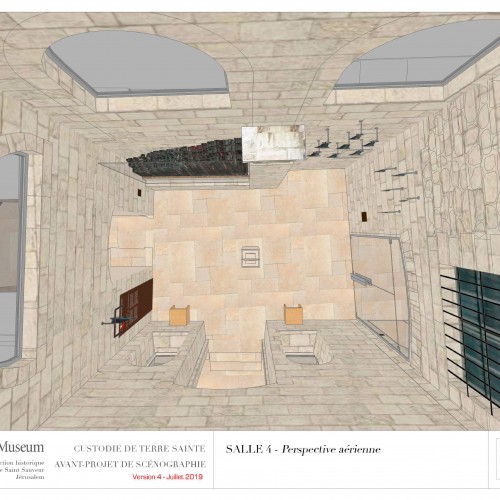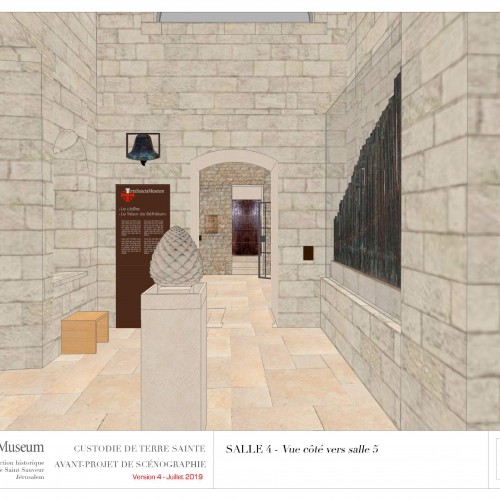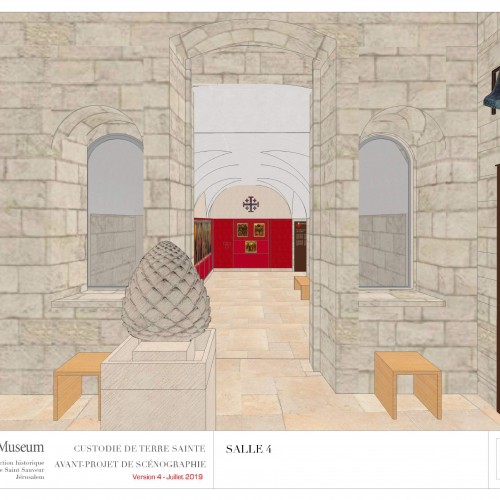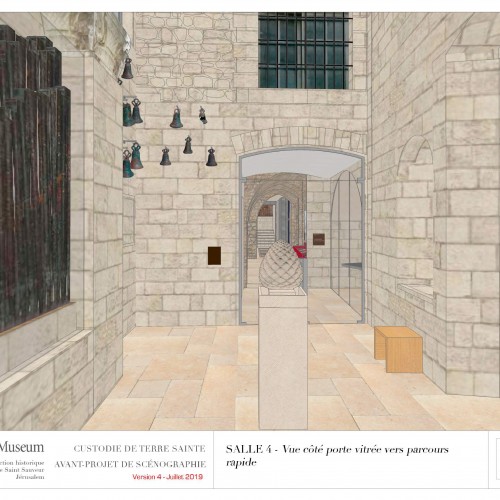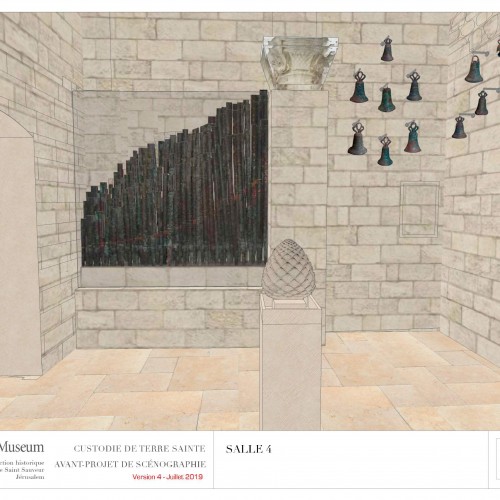The Treasure of Bethlehem
The so-called “Treasure of Bethlehem” is one of the most interesting groups of objects of the Terra Sancta Museum. Liturgical findings were discovered accidentally during restoration works that involved some of the rooms of the Franciscan Monastery St. Catherine “ad Nativitem” in Bethlehem between 1863 and 1906.
The excellent preservation conditions of the object and their unity suggest that the treasure may have been intentionally concealed to protect it from plundering. The objects, mostly made of bronze and silver, belonged to the sacred furniture of the Basilica of the Nativity from the Crusaders time and they will be displayed inside the 17th century cloister of Saint Saviour’s Monastery, in the future section of Terra Sancta Museum.
The set includes: an enameled crosier, three candlesticks, a carillon with thirteen bells, several organ pipes of various length and a pair bowls for ablutions. Studies on the organ pipes are still in progress: the aim is to be able to reproduce the original sound of the organ within the exhibition.
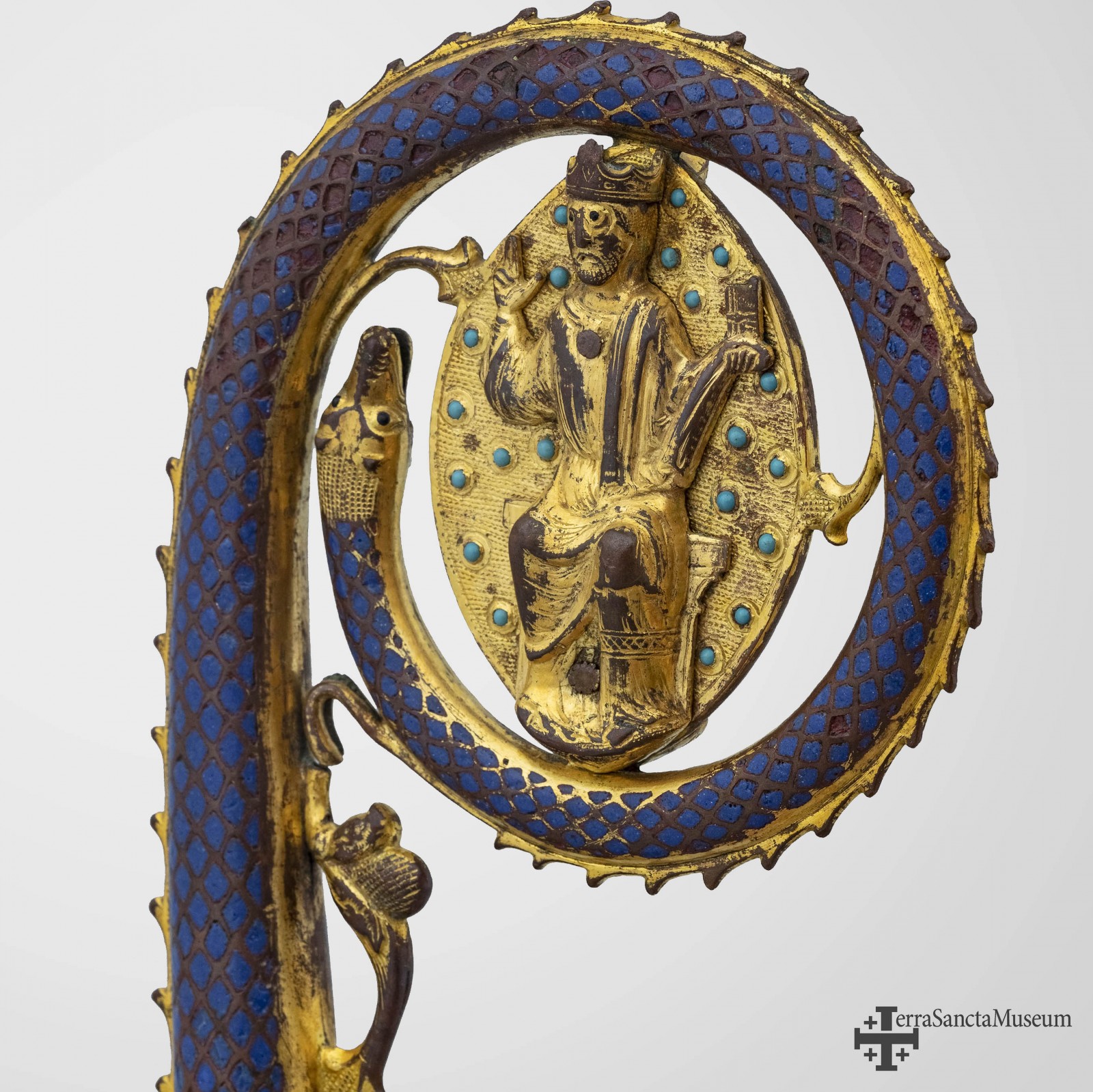 The crosier and the three enameled candlesticks are among the most ancient enameled objects of Limoges known, dating from time of Baduin II (1144-1162).
The crosier and the three enameled candlesticks are among the most ancient enameled objects of Limoges known, dating from time of Baduin II (1144-1162).
The pair of small silver candlesticks carry the Latin inscription: “Cursed be he who takes me away from the holy grotto of the Nativity in Bethlehem”. The crosier is particularly valuable: just like the candlesticks, it was manufactured in Limoges in the 12th century. The fact that it could possibly belong to Bethlehem’s bishop, Goffredo Prefetti, is a good explanation for its origins as during the papacy of pope Innocence IV (1243-1254), the latter was tasked with a mission in France.
The decorative themes of the objects, including fantastic animals with plant volutes and shoots, as well as the processing technique are typical of the French gothic production and can also be found in multiple objects of the same kind.
The copper-made basins, probably meant to be used as an ewer during liturgy and featuring episodes of the life of Saint Thomas the Apostle. Two similar examples from the same workshop, but less well preserved are in the collections of the Louvre Museum and the British Museum.
The style of clothing worn by the figures and the epigraphy are characteristics of the 12th century, and the graphic style indicates Carolingian influence.
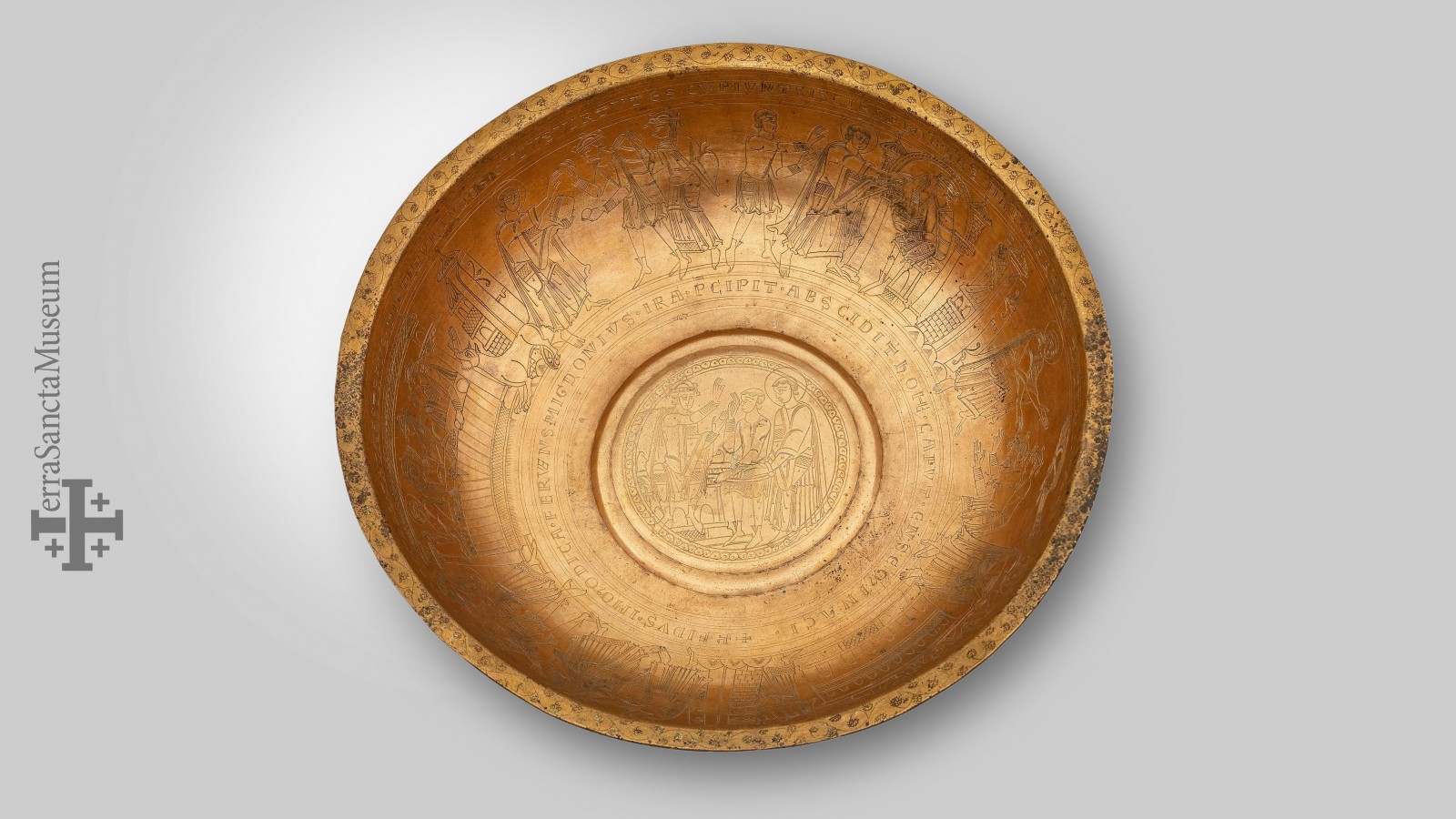
The bells were manufactured by bronze casting. The outer part is decorated with threads and four items are characterized by a cross with equal arms on one side and a letter (C, A, E, D) on the other side.
The smallest is engraved with the following inscription: “Vox Domini”.
The sound of each note made by a specific bell is related to the manufacturing method of these objects, according to which the diameter varies proportionately as the wall thickness remain unchanged.
The exact date of the burial of the bell’s carillon is unknown, however historical sources testify that a ban for Christians to make use of bells was enacted in 1187 and was then followed by a similar measure in 1452 upon request by Sultan Mohammed II.

